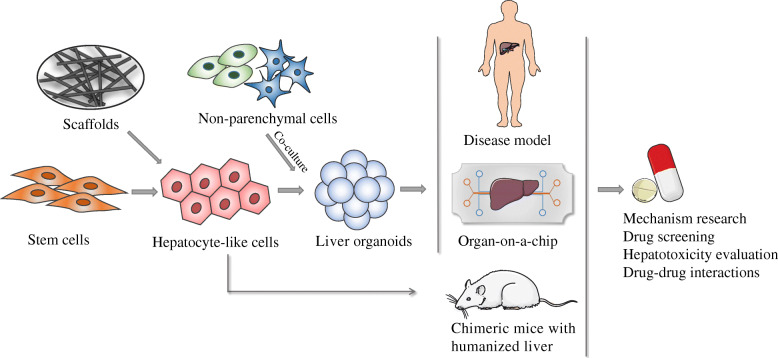Fig. 1.
Generation of liver organoid models and their applications. Organoids are formed by a single cell type or with non-parenchymal cells (e.g., endothelial cells) in co-cultures. They can be scaffold-based or scaffold-free. Patient-derived organoids can be applied to disease modeling. Combined with microfluidics, the organ-on-a-chip accurately mimics the microenvironment in vivo. In addition, chimeric mice with humanized livers were introduced for preclinical drug evaluation to further verify drug metabolism and toxicity in vivo. These 3D organoid models can be applied to drug development and drug screening, toxicology mechanism research, regenerative medicine, and personalized therapy

